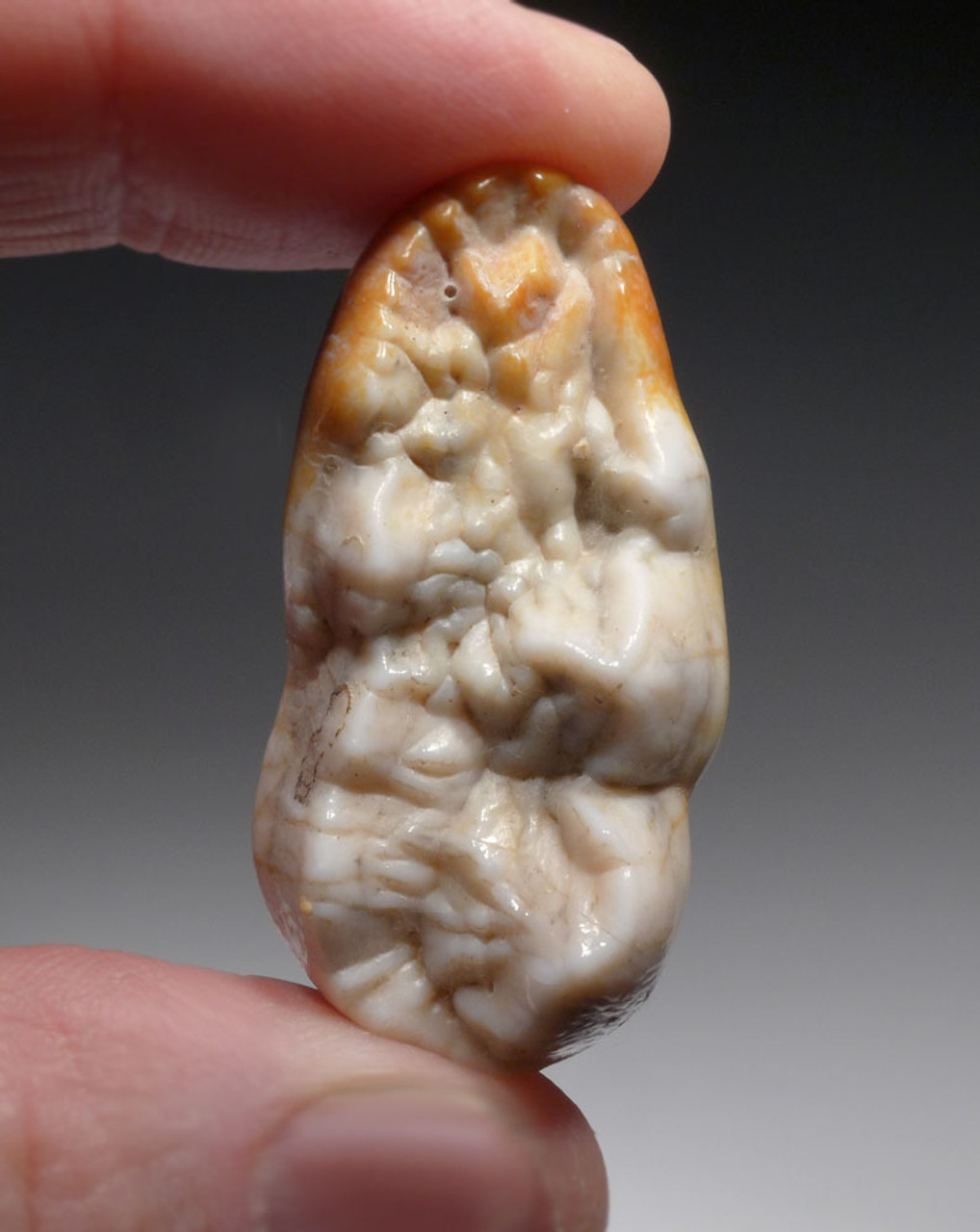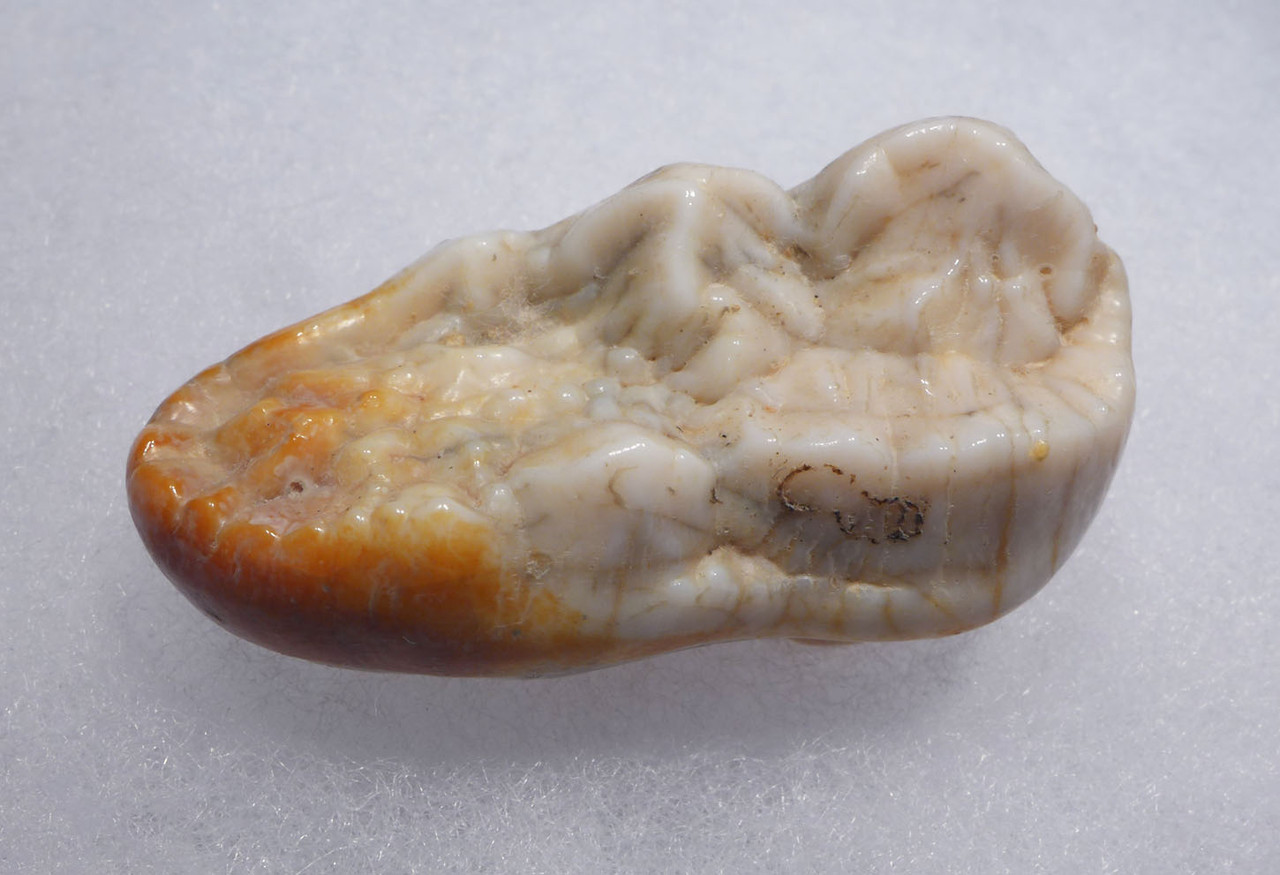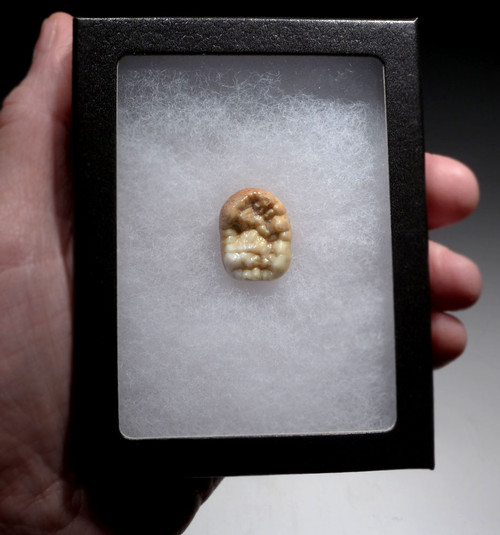Product Description
This fossil Cave Bear large primary molar tooth comes from the extinct giant Cave Bear, Ursus spelaeus of Europe. It is rare as it was found in a cave located in the Ardennes Forest in Belgium. This tooth had not fully erupted in the jaw as the cusps show no wear. This is also seen by the broken root that had not fully formed, leaving a hollow base when viewed in the underside photo. The crown shows no wear and is perfectly preserved in complete form. One end has a beautiful warm blush of red-orange hue. This tooth would make a rare and prized specimen for a collection, or an ideal candidate in a unique jewelry setting.
We have a very limited number of these fossils from a single private collection - the only private collection of Ardennes Forest cave fossils from Belgium we have ever known of, or will ever have since fossil collecting in this area is forbidden and has been for a number of years. There are ONLY FOUR of these teeth in a skull - two uppers and two lowers. The collection only had a couple of these major primary molars so do not hesitate on this specimen as we will never get this material again!
Many years ago, we acquired a collection of cave fossils found in the Ardennes Forest of Belgium. The collection was formed in the 1960's and comprised fossils of predators such as Cave Bear and Cave Hyena, but also fossils of their prey such as Wild Boar. Despite a large part of our business and years of experience being based in Europe, this collection was the single instance ever, we have encountered cave fossils from Belgium! The cave deposit was wet, making the fossil preservation more fragile than usual, requiring the original collector to apply consolidant glue to the fossils in the field, sometimes in a crude manner. The fossils are much whiter in color than those found in the Carpathian Mountains of Romania, adding to their uniqueness. An interesting observation of the fossil layers indicates the wild boar were killed mostly by the Cave Hyenas and their carcasses brought back to the hyena den in the cave. According to the collector who originally dug the fossils, the layer of boar fossils were BELOW the layer of the hyena fossils, confirming this predator-prey relationship. For advanced Ice Age collectors, these fossils are a once-in-a-lifetime opportunity.
 US DOLLAR
US DOLLAR
 EURO
EURO
 AUSTRALIAN DOLLAR
AUSTRALIAN DOLLAR
 CANADIAN DOLLAR
CANADIAN DOLLAR
 POUND STERLING
POUND STERLING




















